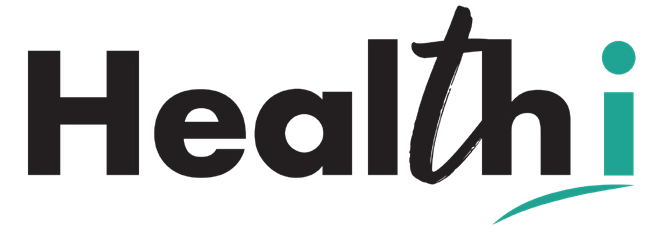What Is Reverse Dieting?
Reverse dieting is a strategic approach to gradually increasing caloric intake following a period of caloric restriction or dieting. Rather than jumping back to maintenance or surplus calories immediately after a fat loss phase, reverse dieting involves small, incremental increases in calories week by week—typically in the range of 50–150 calories—to restore metabolic health and avoid rapid weight regain.
This method is popular among athletes, bodybuilders, and fitness enthusiasts, but it has also gained attention among general dieters looking to recover from long-term caloric deficits without gaining fat.
The Science Behind Reverse Dieting
Metabolic Adaptation During Dieting
When you diet, especially with a significant or prolonged calorie deficit, your body undergoes metabolic adaptation, also known as “adaptive thermogenesis.” In simple terms, your body becomes more efficient at conserving energy to survive on fewer calories. This is a natural response from the body, rooted in evolutionary biology, to protect you from starvation.
Some key adaptations include:
- Reduced resting metabolic rate (RMR) – You burn fewer calories at rest.
- Hormonal changes – Decreased leptin (satiety hormone), increased ghrelin (hunger hormone).
- Lowered energy levels and NEAT (non-exercise activity thermogenesis) – You unconsciously move less throughout the day.
- Muscle loss – Especially when protein intake and resistance training aren’t optimised.
How the Body Adapts to Reverse Dieting
When you begin a reverse diet, you’re slowly reintroducing more energy to your system. Here’s how the body responds positively:
-
Metabolism Gradually Speeds Up
As you slowly increase calories, particularly through carbohydrates (which stimulate leptin), your body begins to upregulate thyroid and leptin levels, increasing your metabolic rate. You may notice:
- Warmer body temperature
- Improved energy and mood
- Better workout performance
-
Hormonal Balance Improves
Reverse dieting can help normalise hunger and fullness cues by restoring balance to leptin, ghrelin, and cortisol levels. For women, it can even help restore menstrual function if disrupted by extreme dieting.
-
Improved Performance and Recovery
With more calories comes better training intensity, strength, and muscle recovery. This is crucial for maintaining and even building lean mass while keeping fat gain to a minimum.
-
Increased NEAT and Activity Levels
As you eat more, your energy levels rise, and so does your spontaneous movement, like walking, fidgeting, and standing more often, which contributes to higher daily calorie burn.
The Key Benefits of Reverse Dieting
-
Minimises Fat Gain After a Diet
A major benefit is that reverse dieting helps avoid the common “rebound effect” seen after traditional diets. Instead of rapidly regaining fat due to overeating, the slow reintroduction of calories allows your metabolism to adapt gradually.
-
Restores a Healthy Metabolism
By reversing the downregulation caused by dieting, you can increase your total daily energy expenditure (TDEE) over time, allowing you to eat more without gaining weight.
-
Improves Relationship with Food
Reverse dieting promotes food flexibility and reduced food anxiety. It encourages a shift from a scarcity mindset to abundance, allowing people to enjoy more variety without fear of regression.
-
Supports Lean Muscle Gain
The combination of adequate calories and resistance training during reverse dieting creates a muscle-building environment while keeping fat gain minimal. This is ideal for those who want to transition from fat loss into a muscle-building or re-composition phase.
-
Better Long-Term Weight Maintenance
Most diets fail because people go back to old eating habits too quickly. Reverse dieting gives you a structured plan for life after dieting, making it more likely that you’ll maintain your results long term.
Who Should Try Reverse Dieting?
Reverse dieting is ideal for:
- Individuals coming off a long-term caloric deficit
- Athletes and competitors after cutting or competition prep
- Chronic dieters with signs of metabolic slowdown
- Anyone wanting to restore metabolic health before entering a muscle-building phase
Tips for a Successful Reverse Diet
- Track Progress Closely – Use weight, body measurements, and photos.
- Be Patient – Increases are small; results compound over weeks.
- Prioritise Protein – Helps preserve lean mass and support metabolism.
- Lift Weights – Resistance training maximises muscle retention and growth.
- Manage Expectations – A small weight increase is normal and often reflects increased glycogen, water, and muscle.
Conclusion
Reverse dieting is more than just eating more—it’s a strategic transition phase that allows your body to heal from the stress of dieting while minimising fat gain and restoring your metabolic engine. With consistency and patience, it offers a sustainable path to a stronger, healthier body that can perform better, feel better, and maintain results long term.
Disclaimer – Healthi and its associates offer health and fitness information designed for educational and entertainment purposes only. You should consult your physician or general practitioner before beginning a new fitness program. You should not rely on this information as a substitute for, nor does it replace, professional medical advice, diagnosis, or treatment. If you have any questions or concerns about your health, you should always consult with a physician, general practitioner, or other qualified healthcare professional. Do not disregard, avoid or delay obtaining medical or health-related advice from your healthcare professional because of something you may have read in our publications or lectures. The use of information provided through the urban wellness service is solely at your own risk and is not medical or healthcare advice.







